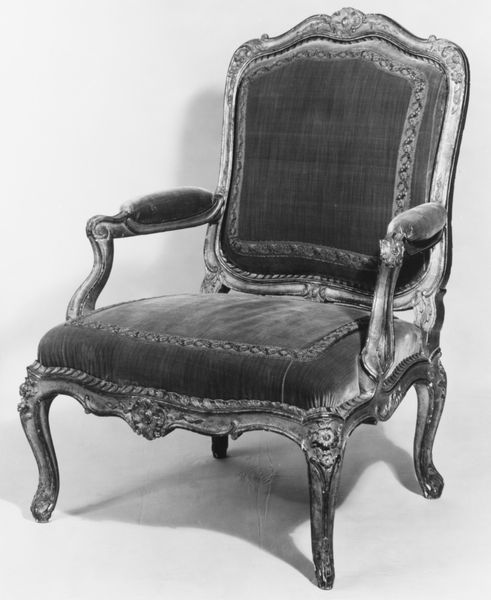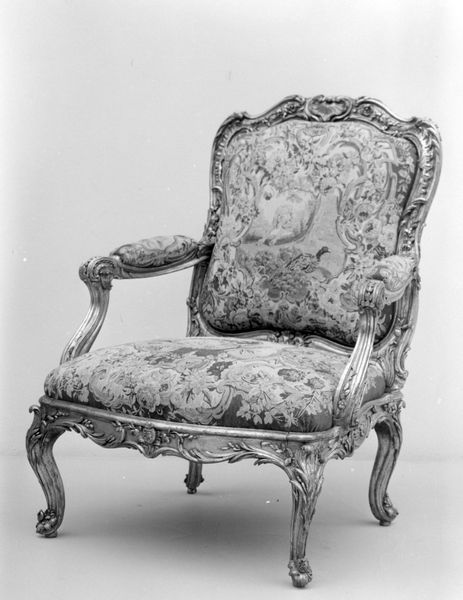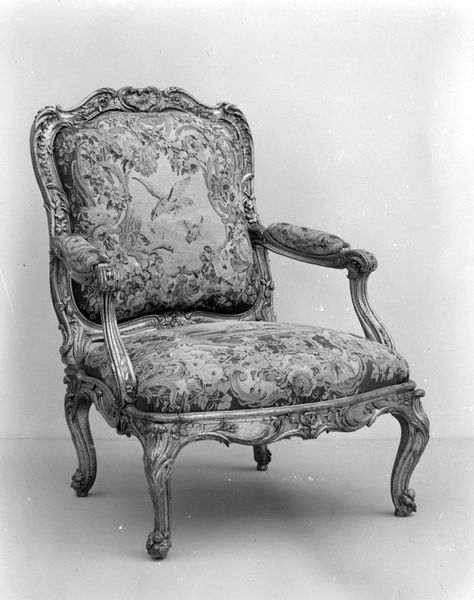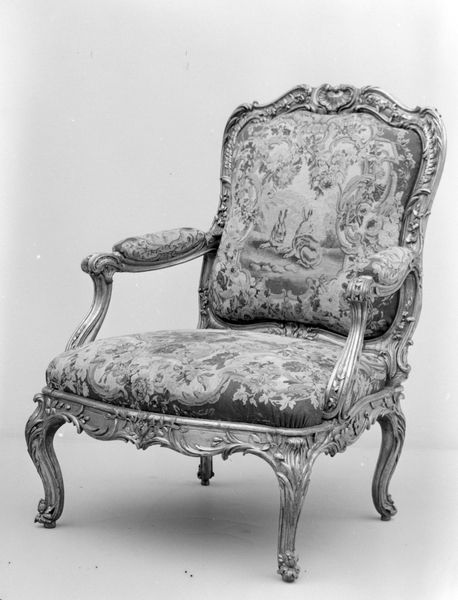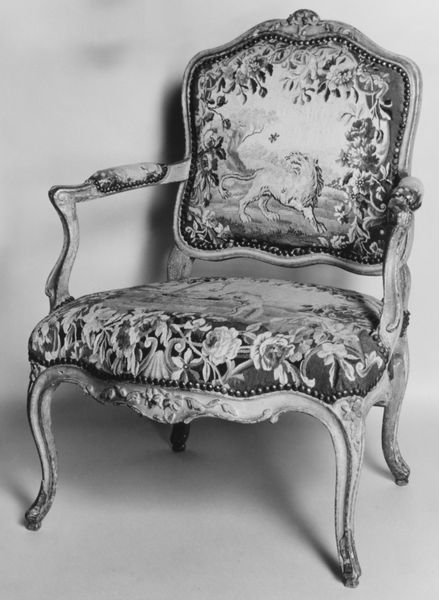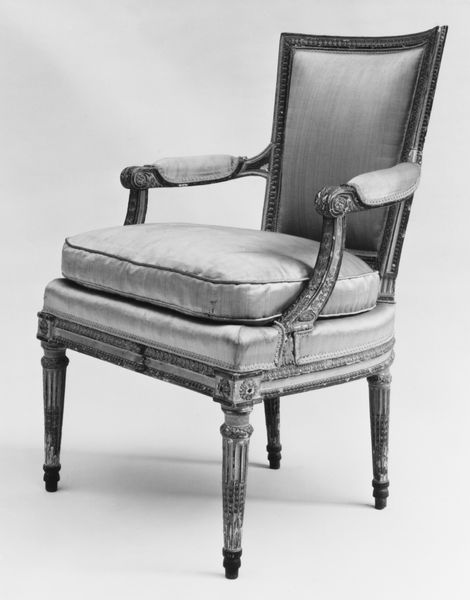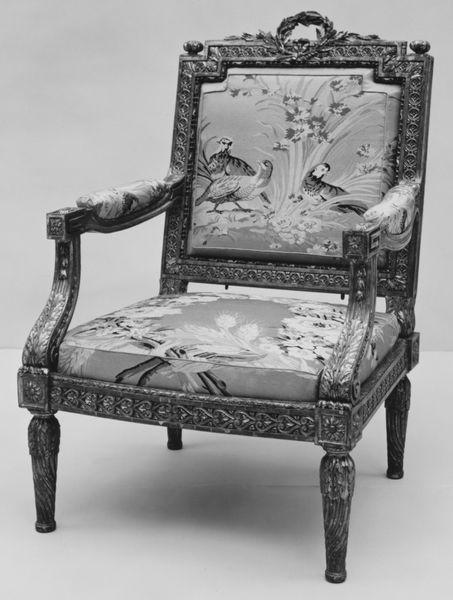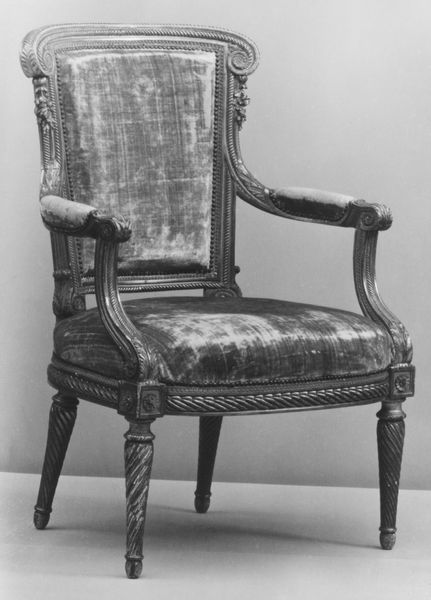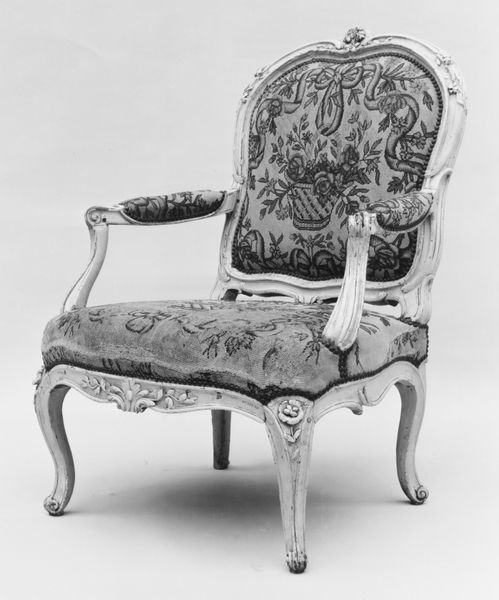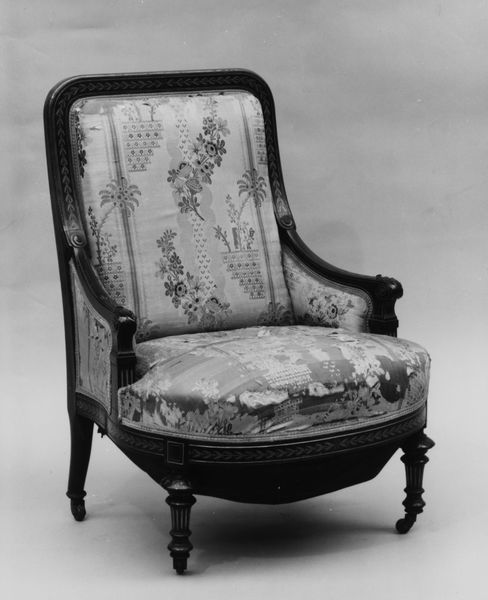
sculpture, wood
#
baroque
#
sculpture
#
detailed texture
#
furniture
#
sculpture
#
wood
#
decorative-art
Dimensions: Overall: 40 1/2 × 31 1/2 × 23 3/4 in. (102.9 × 80 × 60.3 cm)
Copyright: Public Domain
Curator: Looking at this chair, my first thought is of cultivated ease. It has this curvaceous, flowing line quality—suggesting movement and relaxation. Editor: We're examining an "Armchair," created by Louis I Cresson between 1740 and 1755. This stunning example of Baroque decorative art currently resides at the Metropolitan Museum of Art. Made from carved wood, it perfectly captures the opulence and artistic ambition of the era. Curator: The way the light catches those carved details! Do you see how the acanthus leaves spiral, meeting the floral motifs just below the cushion? There’s almost a visual echo happening there. One thinks about how nature motifs have worked themselves into our everyday cultural experience. The use of asymmetry is very typical of this period. Editor: Precisely. These chairs, as everyday as they might have seemed, were actually potent symbols of status and power. Their design, manufacture, and ultimately, their presence within a home signaled an elevated social standing. It’s worth considering where objects sit within social dynamics and hierarchy of values. Curator: It's as though every curve and flourish screams of deliberate artistry, intentionally meant for a refined setting. It definitely embodies the style and spirit of French aristocracy prior to the Revolution! Did chairs like this reflect particular sensibilities about the individual within this setting? Editor: Absolutely. Seating like this would often be arranged to facilitate conversation and display one's fashion, taste and affluence. It served as an emblem of one’s engagement with broader social performances. Think of portraiture too! All those shared cultural elements. Curator: So, it's an assertion, not just an object. This piece reveals a world. Its presence preserves aspects of the emotional culture it inhabited. I keep wondering what conversations this particular armchair ‘overheard’. Editor: It’s striking to consider all the many roles that material objects can hold within the history of societies. Beyond simple comfort, a chair embodies a set of power relationships! Curator: Beautifully put! That reframes the whole thing for me. Editor: Indeed!
Comments
No comments
Be the first to comment and join the conversation on the ultimate creative platform.
